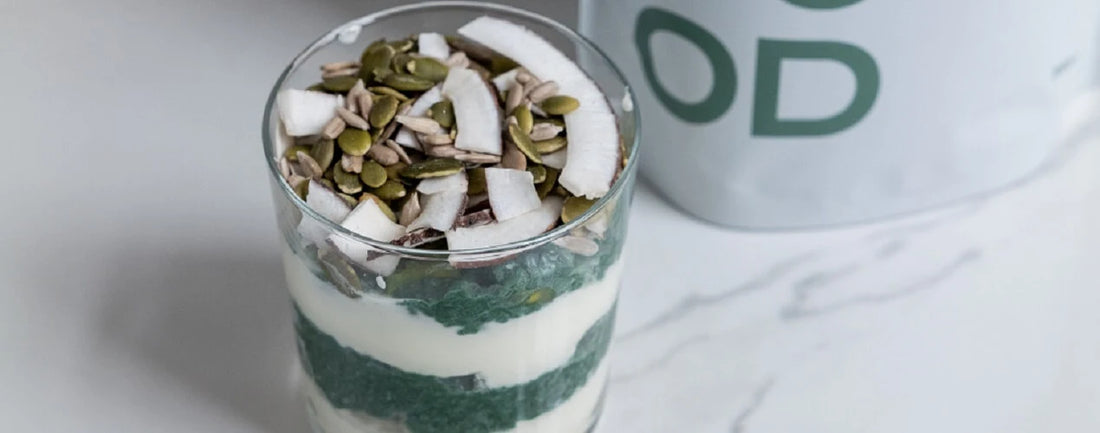The coffee
You can use any coffee you like
The coffee itself
As mentioned earlier, coffee as a product is commonly contaminated with mycotoxins. As a result, the effects of your Bulletproof coffee can be inconsistent. By using higher quality (and yes, more expensive) coffee from trusted producers that check for contaminations, you can brew consistently good Bulletproof coffee! Of course, all coffee stocked by LiveHelfi comes from such trusted sources. LiveHelfi sells some high-quality coffee brands like Bulletproof, Kimera, Four Sigmatic and Warrior Coffee.
How you make the coffee
This is a bit more advanced but certainly worth considering for further coffee optimisation. How you brew the coffee can improve its benefits. For example, by freshly grinding your own beans and by using a metal filter, most of the water- and fat-soluble nutrients from the coffee will remain intact. Using a paper filter and using pre-ground beans will probably decrease the beneficial nutrients (other than caffeine) and will weaken the flavor. You could use a French press and a small coffee grinder to start with. Also, LiveHelfi offers the Aeropress Coffeemaker with metal filters.
The Butter
First off, only use actual butter made from actual milk fat (not some chemically altered margarine). The butter is (aside from the coffee) the main determinant of the flavor. Pick one that you like. The butter contains fat-soluble vitamins, like vitamin A, D, E, and K. As a general rule, the more grass the cow (or goat or sheep) was able to eat, the healthier the butter will be.
If you are lactose intolerant or otherwise have issues with butter, you could try using ghee instead. Ghee is pure milk fat (without any offensive milk proteins or sugars) and is therefore generally tolerable. Same rule here: pick the ghee from cows that ate the most grass. LiveHelfi sells only ghee from
The Coconut Oil
You can do a lot of customisation here. The main thing you want to consider is the MCT content of your coconut oil. The MCT content will determine how quickly your brain can feast on delicious ketones and how much the coffee will raise your energy levels immediately after drinking it.
To briefly rank different types of MCTs based on how quickly they are converted to ketones:
- C6: Caproic acid (not very common in coconut oil): very quick conversion to ketones, but your gut does not tolerate it well. It can be found in poorly-purified MCT oils and is likely to cause issues when consumed. It is also said to taste really bad, so try to avoid it just for that reason.
- C8: Caprylic acid: Tolerated well by the gut and rapidly converted to ketones. About 6% of coconut oil is made up of C8. Has no flavor by itself, but may enhance other flavors.
- C10: Capric acid: Tolerated well after some adjustment, but don’t overdo it. Converts slower to ketones than C8, but still relatively well. About 9% of coconut oil. Has no flavor by itself, but may enhance other flavors.
- C12: Lauric acid: It has a ‘medium’ length by arbitrary classification, but it doesn’t act like an MCT in the body. C12 converts to ketones about as well as other non-MCT fats (which is not very quickly). It has other benefits, like antimicrobial properties. It just won’t raise your ketones like C8 or C10 will. About 50% of coconut oil is made up of lauric acid.
* The C in C8 and C10 stands for the number of carbon atoms that make up the fatty acid chain. So C8 contains 8 carbon atoms.
If we just look at maximising ketones, we want to get as much C8 and C10 into our coffee as possible. For this purpose, we can use MCT oils made by purifying the C8 and C10 fractions of coconut oil. Be careful with dosing, though. The body might take some time to get used to this much MCTs in one beverage. Remember the warning about ‘disaster pants’.
To optimise ketone production, you might want to consider getting C8-only MCT oil. By just taking C8, which is converted quickest to ketones and best tolerated by your gut, you can have most benefits while reducing the potential downsides. You will pay more for your C8 oil than you do for ‘regular’ mixed MCT oil, but you will likely need to use less C8 MCT oil than mixed MCT oil to achieve the same energy benefits. LiveHelfi offers C8 MCT oil from Bulletproof and
Other ingredients
You can, of course, add some more ingredients to the coffee to personalize it even further. For example:
-
Protein powders like
hydrolysed collagen and gelatin. Pick a protein powder that dissolves well and isn’t damaged by heat (like some whey proteins are). 1-2 tablespoons of protein powder will make the coffee even more satiating. - Flavorings: spices like cinnamon, vanilla or cacao can provide some variation to just plain buttered coffee. Using actual coconut oil will also impart a slight flavor of coconut, which will be absent when adding just MCT oil.
- Sweeteners: you want to go for something that doesn’t raise blood glucose, like erythritol, xylitol or stevia.
Be mindful that you pick high-quality ingredients that you tolerate well. Just like with bad coffee, any additional ingredients may trigger your immune and fight or flight responses and ruin the benefits of drinking the coffee in the first place!
The Official Bulletproof Coffee (as formulated by Dave Asprey)
The official Bulletproof Coffee is made with Bulletproof coffee beans, Octane oil (C8 MCT oil) and grass-fed butter. LiveHelfi sells some alternatives to the coffee and the coconut/MCT oil that are also worth to be taken into consideration.
So, which coffee recipe is best?
Whatever works best for you! Feel free to experiment with different coffee, butter, oils and ratios of the ingredients like a true biohacker. To inspire you, we collected 10 delicious Bulletproof coffee recipes for you to enjoy!











